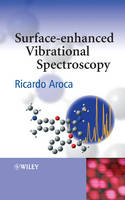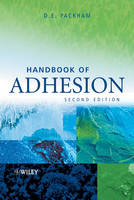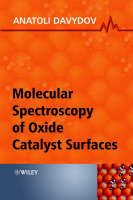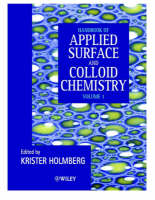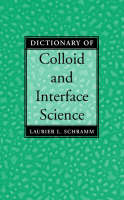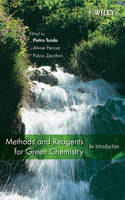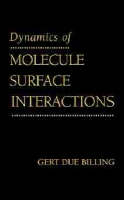Advanced Membrane Technology and Applications
 -15%
portes grátis
-15%
portes grátis
Advanced Membrane Technology and Applications
Matsuura, Takeshi; Li, Norman N; Ho, W. S. Winston; Fane, Anthony G.
John Wiley & Sons Inc
10/2008
1016
Dura
Inglês
9780471731672
15 a 20 dias
1972
CONTRIBUTORS xix
PART I MEMBRANES AND APPLICATIONS IN WATER AND WASTEWATER 1
1. Thin-Film Composite Membranes for Reverse Osmosis 3
Tadahiro Uemura and Masahiro Henmi
1.1 Introduction 3
1.2 Application of RO Membranes 3
1.3 Major Progress in RO Membranes 4
1.4 Trends in RO Membrane Technology 6
1.5 Reverse Osmosis/Biofouling Protection 13
1.6 Low-Fouling RO Membrane for Wastewater Reclamation 14
1.7 Chlorine Tolerance of Cross-Linked Aromatic Polyamide Membrane 17
2. Cellulose Triacetate Membranes for Reverse Osmosis 21
A. Kumano and N. Fujiwara
2.1 Introduction 21
2.2 History of Cellulose Acetate Membrane 21
2.3 Toyobo RO Module for Seawater Desalination 22
2.4 Actual Performance of Toyobo RO Module for Seawater Desalination 28
2.5 Most Recent RO Module of Cellulose Triacetate 35
2.6 Conclusion 43
3. Seawater Desalination 47
Nikolay Voutchkov and Raphael Semiat
3.1 Introduction 47
3.2 Seawater Desalination Plant Configuration 50
3.3 Water Production Costs 82
3.4 Future Trends 84
3.5 Conclusion 85
4. Seawater Desalination by Ultralow-Energy Reverse Osmosis 87
R. L. Truby
4.1 Introduction 87
4.2 SWRO Energy Reduction Using Energy Recovery Technology 88
4.3 SWRO Energy Optimization 95
4.4 Affordable Desalination Collaboration (ADC) 96
4.5 Conclusion 99
5. Microfiltration and Ultrafiltration 101
N. Kubota, T. Hashimoto, and Y. Mori
5.1 Introduction 101
5.2 Recent Trends and Progress in MF/UF Technology 104
5.3 Future Prospects 127
6. Water Treatment by Microfiltration and Ultrafiltration 131
M. D. Kennedy, J. Kamanyi, S. G. Salinas Rodri?guez, N. H. Lee, J. C. Schippers, and G. Amy
6.1 Introduction 131
6.2 Materials, Module Configurations, and Manufacturers 133
6.3 Microfiltration/Ultrafiltration Pretreatment 142
6.4 Membrane Applications 146
6.5 Membrane Fouling and Cleaning 149
6.6 Integrated Membrane Systems (MF or UF ? RO or NF) 160
6.7 Backwash Water Reuse, Treatment, and Disposal 164
7. Water Reclamation and Desalination by Membranes 171
Pierre Cote, Mingang Liu, and Steven Siverns
7.1 Introduction 171
7.2 Water Reclamation and Seawater Desalination 172
7.3 Cost Estimation 173
7.4 Process Options for Water Reclamation 174
7.5 Cost of Water Reclamation 177
7.6 Process Options for Desalination 181
7.7 Cost of Desalination 181
7.8 Water Reuse versus Desalination 185
7.9 Conclusions 186
8. Chitosan Membranes with Nanoparticles for Remediation of Chlorinated Organics 189
Yit-Hong Tee and Dibakar Bhattacharyya
8.1 Introduction 189
8.2 Experimental Section 191
8.3 Results and Discussions 197
8.4 Conclusions 212
9. Membrane Bioreactors for Wastewater Treatment 217
P. Cornel and S. Krause
9.1 Introduction 217
9.2 Principle of the Membrane Bioreactor Process 217
9.3 MBR Design Considerations 230
9.4 Applications and Cost 233
9.5 Conclusions and Summary 235
10. Submerged Membranes 239
Anthony G. Fane
10.1 Introduction 239
10.2 Modes of Operation of Submerged Membranes 241
10.3 Submerged Membrane Module Geometries 246
10.4 Bubbling and Hydrodynamic Considerations 253
10.5 Practical Aspects 262
10.6 Applications 267
10.7 Conclusions 268
11. Nanofiltration 271
Bart Van der Bruggen and Jeroen Geens
11.1 Introduction 271
11.2 Process Principles 272
11.3 Application of Nanofiltration for Production of Drinking Water and Process Water 276
11.4 Wastewater Polishing and Water Reuse 280
11.5 Other Applications 283
11.6 Solvent-Resistant Nanofiltration 284
11.7 Conclusions 287
12. Membrane Distillation 297
Mohamed Khayet
12.1 Introduction to Membrane Distillation 297
12.2 Membrane Distillation Membranes and Modules 305
12.3 Membrane Distillation Membrane Characterization Techniques 320
12.4 Transport Mechanisms in MD: Temperature Polarization, Concentration Polarization, and Theoretical Models 331
12.5 Membrane Distillation Applications 341
12.6 Long-Term MD Performance and Membrane Fouling in MD 355
12.7 Hybrid MD Systems 356
12.8 Concluding Remarks and Future Directions in MD 357
13. Ultrapure Water by Membranes 371
Avijit Dey
13.1 Introduction 371
13.2 Integrated Membrane Technology in UPW Systems 377
PART II MEMBRANES FOR BIOTECHNOLOGY AND CHEMICAL/BIOMEDICAL APPLICATIONS 407
14. Tissue Engineering with Membranes 409
Zhanfeng Cui
14.1 Introduction 409
14.2 Hollow-Fiber Membrane Bioreactors for Three-Dimensional Tissue Culture 412
14.3 Micromembrane Probes for Tissue Engineering Monitoring 420
14.4 Future Opportunities 427
14.5 Summary 429
15. Biopharmaceutical Separations by Ultrafiltration 435
Raja Ghosh
15.1 Introduction 435
15.2 Ultrafiltration: An Overview 436
15.3 Basic Working Principles of Ultrafiltration 437
15.4 Ultrafiltration Membranes and Devices 438
15.5 Ultrafiltration Processes 446
15.6 Conclusion 449
16. Nanofiltration in Organic Solvents 451
P. Silva, L. G. Peeva, and A. G. Livingston
16.1 Organic Solvent Nanofiltration Membranes 451
16.2 OSN Transport Mechanisms-Theoretical Background 458
16.3 Applications of Organic Solvent Nanofiltration 461
17. Pervaporation 469
Fakhir U. Baig
17.1 Introduction 469
17.2 Applications of AZEO SEP and VOC SEP 471
17.3 Computer Simulation of Module Performance 475
17.4 Permeation and Separation Model in Hollow-Fiber Membrane Module 481
17.5 Conclusion 487
18. Biomedical Applications of Membranes 489
G. Catapano and J. Vienken
18.1 Introduction 489
18.2 Membrane Therapeutic Treatments 490
18.3 Medical Membrane Properties 496
18.4 Medical Membrane Materials 501
18.5 Biocompatibility of Membrane-Based Therapeutic Treatments 508
18.6 Conclusions 511
19. Hemodialysis Membranes 519
Norma J. Ofsthun, Sujatha Karoor, and Mitsuru Suzuki
19.1 Introduction 519
19.2 Transport Requirements 521
19.3 Other Requirements 525
19.4 Membrane Materials, Spinning Technology, and Structure 527
19.5 Dialyzer Design and Performance 530
19.6 Current Market Trends 533
19.7 Future Directions 533
19.8 Conclusions 536
20. Tangential-Flow Filtration for Virus Capture 541
S. Ranil Wickramasinghe
20.1 Introduction 541
20.2 Tangential-Flow Filtration 543
20.3 Tangential-Flow Filtration for Virus Capture 545
20.4 Tangential-Flow Filtration for Virus Clearance 550
20.5 Conclusions 552
PART III GAS SEPARATIONS 557
21. Vapor and Gas Separation by Membranes 559
Richard W. Baker
21.1 Introduction to Membranes and Modules 559
21.2 Membrane Process Design 563
21.3 Applications 567
21.4 Conclusions 577
21.5 Glossary 577
22. Gas Separation by Polyimide Membranes 581
Yoji Kase
22.1 Introduction 581
22.2 Permeability and Chemical Structure of Polyimides 582
22.3 Manufacture of Asymmetric Membrane 587
22.4 Membrane Module 588
22.5 Applications of Polyimide Gas Separation Membranes 589
23. Gas Separation by Carbon Membranes 599
P. Jason Williams and William J. Koros
23.1 Introduction 599
23.2 Structure of Carbon Membranes 599
23.3 Transport in Carbon Membranes 601
23.4 Formation of Carbon Membranes 604
23.5 Current Separation Performance 616
23.6 Production of CMS Modules 620
23.7 Challenges and Disadvantages of CMS Membranes 622
23.8 Direction of Carbon Membrane Development 626
24. Polymeric Membrane Materials and Potential Use in Gas Separation 633
Ho Bum Park and Young Moo Lee
24.1 Introduction 633
24.2 Basic Principles of Gas Separation in Polymer Membranes 635
24.3 Limitations of Gas Separations Using Polymer Membranes 643
24.4 Polymer Membrane Materials 646
24.5 Membrane Gas Separation Applications and Conclusions 659
25. Hydrogen Separation Membranes 671
Yi Hua Ma
25.1 Introduction 671
25.2 Porous Nonmetallic Membranes for Hydrogen Separations 672
25.3 High-Temperature Hydrogen Separation Membranes 674
25.4 Concluding Remarks 680
PART IV MEMBRANE CONTACTORS AND REACTORS 685
26. Membrane Contactors 687
Kamalesh K. Sirkar
26.1 Introduction 687
26.2 Membrane-Based Contacting of Two Fluid Phases 690
26.3 Membrane-Based Solid-Fluid Contacting 696
26.4 Two Immobilized Phase Interfaces 697
26.5 Dispersive Contacting in a Membrane Contactor 699
26.6 Concluding Remarks 700
27. Membrane Reactors 703
Enrico Drioli and Enrica Fontananova
27.1 State-of-the-Art On Catalytic Membrane Reactors 703
27.2 Advanced Oxidation Processes for Wastewater Treatments 704
27.3 Selective Oxidations 710
27.4 Biocatalytic Membrane Reactors 712
27.5 Catalytic Crystals 712
27.6 Inorganic Membrane Reactors 713
27.7 Microreactors 713
27.8 Conclusions 714
PART V ENVIRONMENTAL AND ENERGY APPLICATIONS 719
28. Facilitated Transport Membranes for Environmental, Energy, and Biochemical Applications 721
Jian Zou, Jin Huang, and W. S. Winston Ho
28.1 Introduction 721
28.2 Supported Liquid Membranes with Strip Dispersion 729
28.3 Carbon-Dioxide-Selective Membranes 737
28.4 Conclusions 747
29. Fuel Cell Membranes 755
Peter N. Pintauro and Ryszard Wycisk
29.1 Introduction to Fuel Cells 755
29.2 Background on Fuel Cell Membranes 759
29.3 Recent Work on New Fuel Cell Membranes 764
29.4 Conclusions 779
PART VI MEMBRANE MATERIALS AND CHARACTERIZATION 787
30. Recent Progress in Mixed-Matrix Membranes 789
Chunqing Liu, Santi Kulprathipanja, Alexis M. W. Hillock, Shabbir Husain, and William J. Koros
30.1 Introduction 789
30.2 Recent Progress in Mixed-Matrix Membranes 794
30.3 Summary and Future Opportunities 809
31. Fabrication of Hollow-Fiber Membranes by Phase Inversion 821
Tai-Shung Neal Chung
31.1 Introduction 821
31.2 Basic Understanding 822
31.3 Recent Progresses on Single-Layer Asymmetric Hollow-Fiber Membranes 825
31.4 Dual-Layer Hollow Fibers 831
31.5 Concluding Remarks 835
32. Membrane Surface Characterization 841
M. Kallioinen and M. Nystrom
32.1 Introduction 841
32.2 Characterization of the Chemical Structure of a Membrane 842
32.3 Characterization of Membrane Hydrophilicity 852
32.4 Characterization of Membrane Charge 855
32.5 Characterization of Membrane Morphology 859
32.6 Conclusions 867
33. Membrane Characterization by Ultrasonic Time-Domain Reflectometry 879
William B. Krantz and Alan R. Greenberg
33.1 Introduction 879
33.2 Principle of UTDR Measurement 880
33.3 Characterization of Inorganic Membrane Fouling 882
33.4 Characterization of Membrane Biofouling 885
33.5 Characterization of Membrane Compaction 886
33.6 Characterization of Membrane Formation 889
33.7 Characterization of Membrane Morphology 891
33.8 Summary and Recommendations 894
34. Microstructural Optimization of Thin Supported Inorganic Membranes for Gas and Water Purification 899
M. L. Mottern, J. Y. Shi, K. Shqau, D. Yu, and Henk Verweij
34.1 Introduction 899
34.2 Morphology, Porosity, and Defects 902
34.3 Optimization of Supported Membrane Structures 908
34.4 Synthesis and Manufacturing 917
34.5 Characterization 918
34.6 Conclusions 923
35. Structure/Property Characteristics of Polar Rubbery Membranes for Carbon Dioxide Removal 929
Victor A. Kusuma, Benny D. Freeman, Miguel Jose-Yacaman, Haiqing Lin, Sumod Kalakkunnath, and Douglass S. Kalika
35.1 Introduction and Background 929
35.2 Theory and Experiment 931
35.3 Results and Discussion 937
35.4 Conclusions 950
Index 955
CONTRIBUTORS xix
PART I MEMBRANES AND APPLICATIONS IN WATER AND WASTEWATER 1
1. Thin-Film Composite Membranes for Reverse Osmosis 3
Tadahiro Uemura and Masahiro Henmi
1.1 Introduction 3
1.2 Application of RO Membranes 3
1.3 Major Progress in RO Membranes 4
1.4 Trends in RO Membrane Technology 6
1.5 Reverse Osmosis/Biofouling Protection 13
1.6 Low-Fouling RO Membrane for Wastewater Reclamation 14
1.7 Chlorine Tolerance of Cross-Linked Aromatic Polyamide Membrane 17
2. Cellulose Triacetate Membranes for Reverse Osmosis 21
A. Kumano and N. Fujiwara
2.1 Introduction 21
2.2 History of Cellulose Acetate Membrane 21
2.3 Toyobo RO Module for Seawater Desalination 22
2.4 Actual Performance of Toyobo RO Module for Seawater Desalination 28
2.5 Most Recent RO Module of Cellulose Triacetate 35
2.6 Conclusion 43
3. Seawater Desalination 47
Nikolay Voutchkov and Raphael Semiat
3.1 Introduction 47
3.2 Seawater Desalination Plant Configuration 50
3.3 Water Production Costs 82
3.4 Future Trends 84
3.5 Conclusion 85
4. Seawater Desalination by Ultralow-Energy Reverse Osmosis 87
R. L. Truby
4.1 Introduction 87
4.2 SWRO Energy Reduction Using Energy Recovery Technology 88
4.3 SWRO Energy Optimization 95
4.4 Affordable Desalination Collaboration (ADC) 96
4.5 Conclusion 99
5. Microfiltration and Ultrafiltration 101
N. Kubota, T. Hashimoto, and Y. Mori
5.1 Introduction 101
5.2 Recent Trends and Progress in MF/UF Technology 104
5.3 Future Prospects 127
6. Water Treatment by Microfiltration and Ultrafiltration 131
M. D. Kennedy, J. Kamanyi, S. G. Salinas Rodri?guez, N. H. Lee, J. C. Schippers, and G. Amy
6.1 Introduction 131
6.2 Materials, Module Configurations, and Manufacturers 133
6.3 Microfiltration/Ultrafiltration Pretreatment 142
6.4 Membrane Applications 146
6.5 Membrane Fouling and Cleaning 149
6.6 Integrated Membrane Systems (MF or UF ? RO or NF) 160
6.7 Backwash Water Reuse, Treatment, and Disposal 164
7. Water Reclamation and Desalination by Membranes 171
Pierre Cote, Mingang Liu, and Steven Siverns
7.1 Introduction 171
7.2 Water Reclamation and Seawater Desalination 172
7.3 Cost Estimation 173
7.4 Process Options for Water Reclamation 174
7.5 Cost of Water Reclamation 177
7.6 Process Options for Desalination 181
7.7 Cost of Desalination 181
7.8 Water Reuse versus Desalination 185
7.9 Conclusions 186
8. Chitosan Membranes with Nanoparticles for Remediation of Chlorinated Organics 189
Yit-Hong Tee and Dibakar Bhattacharyya
8.1 Introduction 189
8.2 Experimental Section 191
8.3 Results and Discussions 197
8.4 Conclusions 212
9. Membrane Bioreactors for Wastewater Treatment 217
P. Cornel and S. Krause
9.1 Introduction 217
9.2 Principle of the Membrane Bioreactor Process 217
9.3 MBR Design Considerations 230
9.4 Applications and Cost 233
9.5 Conclusions and Summary 235
10. Submerged Membranes 239
Anthony G. Fane
10.1 Introduction 239
10.2 Modes of Operation of Submerged Membranes 241
10.3 Submerged Membrane Module Geometries 246
10.4 Bubbling and Hydrodynamic Considerations 253
10.5 Practical Aspects 262
10.6 Applications 267
10.7 Conclusions 268
11. Nanofiltration 271
Bart Van der Bruggen and Jeroen Geens
11.1 Introduction 271
11.2 Process Principles 272
11.3 Application of Nanofiltration for Production of Drinking Water and Process Water 276
11.4 Wastewater Polishing and Water Reuse 280
11.5 Other Applications 283
11.6 Solvent-Resistant Nanofiltration 284
11.7 Conclusions 287
12. Membrane Distillation 297
Mohamed Khayet
12.1 Introduction to Membrane Distillation 297
12.2 Membrane Distillation Membranes and Modules 305
12.3 Membrane Distillation Membrane Characterization Techniques 320
12.4 Transport Mechanisms in MD: Temperature Polarization, Concentration Polarization, and Theoretical Models 331
12.5 Membrane Distillation Applications 341
12.6 Long-Term MD Performance and Membrane Fouling in MD 355
12.7 Hybrid MD Systems 356
12.8 Concluding Remarks and Future Directions in MD 357
13. Ultrapure Water by Membranes 371
Avijit Dey
13.1 Introduction 371
13.2 Integrated Membrane Technology in UPW Systems 377
PART II MEMBRANES FOR BIOTECHNOLOGY AND CHEMICAL/BIOMEDICAL APPLICATIONS 407
14. Tissue Engineering with Membranes 409
Zhanfeng Cui
14.1 Introduction 409
14.2 Hollow-Fiber Membrane Bioreactors for Three-Dimensional Tissue Culture 412
14.3 Micromembrane Probes for Tissue Engineering Monitoring 420
14.4 Future Opportunities 427
14.5 Summary 429
15. Biopharmaceutical Separations by Ultrafiltration 435
Raja Ghosh
15.1 Introduction 435
15.2 Ultrafiltration: An Overview 436
15.3 Basic Working Principles of Ultrafiltration 437
15.4 Ultrafiltration Membranes and Devices 438
15.5 Ultrafiltration Processes 446
15.6 Conclusion 449
16. Nanofiltration in Organic Solvents 451
P. Silva, L. G. Peeva, and A. G. Livingston
16.1 Organic Solvent Nanofiltration Membranes 451
16.2 OSN Transport Mechanisms-Theoretical Background 458
16.3 Applications of Organic Solvent Nanofiltration 461
17. Pervaporation 469
Fakhir U. Baig
17.1 Introduction 469
17.2 Applications of AZEO SEP and VOC SEP 471
17.3 Computer Simulation of Module Performance 475
17.4 Permeation and Separation Model in Hollow-Fiber Membrane Module 481
17.5 Conclusion 487
18. Biomedical Applications of Membranes 489
G. Catapano and J. Vienken
18.1 Introduction 489
18.2 Membrane Therapeutic Treatments 490
18.3 Medical Membrane Properties 496
18.4 Medical Membrane Materials 501
18.5 Biocompatibility of Membrane-Based Therapeutic Treatments 508
18.6 Conclusions 511
19. Hemodialysis Membranes 519
Norma J. Ofsthun, Sujatha Karoor, and Mitsuru Suzuki
19.1 Introduction 519
19.2 Transport Requirements 521
19.3 Other Requirements 525
19.4 Membrane Materials, Spinning Technology, and Structure 527
19.5 Dialyzer Design and Performance 530
19.6 Current Market Trends 533
19.7 Future Directions 533
19.8 Conclusions 536
20. Tangential-Flow Filtration for Virus Capture 541
S. Ranil Wickramasinghe
20.1 Introduction 541
20.2 Tangential-Flow Filtration 543
20.3 Tangential-Flow Filtration for Virus Capture 545
20.4 Tangential-Flow Filtration for Virus Clearance 550
20.5 Conclusions 552
PART III GAS SEPARATIONS 557
21. Vapor and Gas Separation by Membranes 559
Richard W. Baker
21.1 Introduction to Membranes and Modules 559
21.2 Membrane Process Design 563
21.3 Applications 567
21.4 Conclusions 577
21.5 Glossary 577
22. Gas Separation by Polyimide Membranes 581
Yoji Kase
22.1 Introduction 581
22.2 Permeability and Chemical Structure of Polyimides 582
22.3 Manufacture of Asymmetric Membrane 587
22.4 Membrane Module 588
22.5 Applications of Polyimide Gas Separation Membranes 589
23. Gas Separation by Carbon Membranes 599
P. Jason Williams and William J. Koros
23.1 Introduction 599
23.2 Structure of Carbon Membranes 599
23.3 Transport in Carbon Membranes 601
23.4 Formation of Carbon Membranes 604
23.5 Current Separation Performance 616
23.6 Production of CMS Modules 620
23.7 Challenges and Disadvantages of CMS Membranes 622
23.8 Direction of Carbon Membrane Development 626
24. Polymeric Membrane Materials and Potential Use in Gas Separation 633
Ho Bum Park and Young Moo Lee
24.1 Introduction 633
24.2 Basic Principles of Gas Separation in Polymer Membranes 635
24.3 Limitations of Gas Separations Using Polymer Membranes 643
24.4 Polymer Membrane Materials 646
24.5 Membrane Gas Separation Applications and Conclusions 659
25. Hydrogen Separation Membranes 671
Yi Hua Ma
25.1 Introduction 671
25.2 Porous Nonmetallic Membranes for Hydrogen Separations 672
25.3 High-Temperature Hydrogen Separation Membranes 674
25.4 Concluding Remarks 680
PART IV MEMBRANE CONTACTORS AND REACTORS 685
26. Membrane Contactors 687
Kamalesh K. Sirkar
26.1 Introduction 687
26.2 Membrane-Based Contacting of Two Fluid Phases 690
26.3 Membrane-Based Solid-Fluid Contacting 696
26.4 Two Immobilized Phase Interfaces 697
26.5 Dispersive Contacting in a Membrane Contactor 699
26.6 Concluding Remarks 700
27. Membrane Reactors 703
Enrico Drioli and Enrica Fontananova
27.1 State-of-the-Art On Catalytic Membrane Reactors 703
27.2 Advanced Oxidation Processes for Wastewater Treatments 704
27.3 Selective Oxidations 710
27.4 Biocatalytic Membrane Reactors 712
27.5 Catalytic Crystals 712
27.6 Inorganic Membrane Reactors 713
27.7 Microreactors 713
27.8 Conclusions 714
PART V ENVIRONMENTAL AND ENERGY APPLICATIONS 719
28. Facilitated Transport Membranes for Environmental, Energy, and Biochemical Applications 721
Jian Zou, Jin Huang, and W. S. Winston Ho
28.1 Introduction 721
28.2 Supported Liquid Membranes with Strip Dispersion 729
28.3 Carbon-Dioxide-Selective Membranes 737
28.4 Conclusions 747
29. Fuel Cell Membranes 755
Peter N. Pintauro and Ryszard Wycisk
29.1 Introduction to Fuel Cells 755
29.2 Background on Fuel Cell Membranes 759
29.3 Recent Work on New Fuel Cell Membranes 764
29.4 Conclusions 779
PART VI MEMBRANE MATERIALS AND CHARACTERIZATION 787
30. Recent Progress in Mixed-Matrix Membranes 789
Chunqing Liu, Santi Kulprathipanja, Alexis M. W. Hillock, Shabbir Husain, and William J. Koros
30.1 Introduction 789
30.2 Recent Progress in Mixed-Matrix Membranes 794
30.3 Summary and Future Opportunities 809
31. Fabrication of Hollow-Fiber Membranes by Phase Inversion 821
Tai-Shung Neal Chung
31.1 Introduction 821
31.2 Basic Understanding 822
31.3 Recent Progresses on Single-Layer Asymmetric Hollow-Fiber Membranes 825
31.4 Dual-Layer Hollow Fibers 831
31.5 Concluding Remarks 835
32. Membrane Surface Characterization 841
M. Kallioinen and M. Nystrom
32.1 Introduction 841
32.2 Characterization of the Chemical Structure of a Membrane 842
32.3 Characterization of Membrane Hydrophilicity 852
32.4 Characterization of Membrane Charge 855
32.5 Characterization of Membrane Morphology 859
32.6 Conclusions 867
33. Membrane Characterization by Ultrasonic Time-Domain Reflectometry 879
William B. Krantz and Alan R. Greenberg
33.1 Introduction 879
33.2 Principle of UTDR Measurement 880
33.3 Characterization of Inorganic Membrane Fouling 882
33.4 Characterization of Membrane Biofouling 885
33.5 Characterization of Membrane Compaction 886
33.6 Characterization of Membrane Formation 889
33.7 Characterization of Membrane Morphology 891
33.8 Summary and Recommendations 894
34. Microstructural Optimization of Thin Supported Inorganic Membranes for Gas and Water Purification 899
M. L. Mottern, J. Y. Shi, K. Shqau, D. Yu, and Henk Verweij
34.1 Introduction 899
34.2 Morphology, Porosity, and Defects 902
34.3 Optimization of Supported Membrane Structures 908
34.4 Synthesis and Manufacturing 917
34.5 Characterization 918
34.6 Conclusions 923
35. Structure/Property Characteristics of Polar Rubbery Membranes for Carbon Dioxide Removal 929
Victor A. Kusuma, Benny D. Freeman, Miguel Jose-Yacaman, Haiqing Lin, Sumod Kalakkunnath, and Douglass S. Kalika
35.1 Introduction and Background 929
35.2 Theory and Experiment 931
35.3 Results and Discussion 937
35.4 Conclusions 950
Index 955



